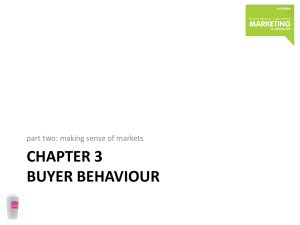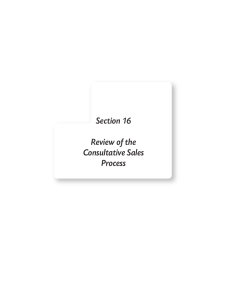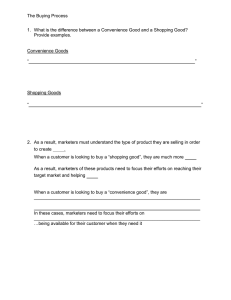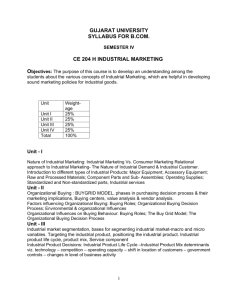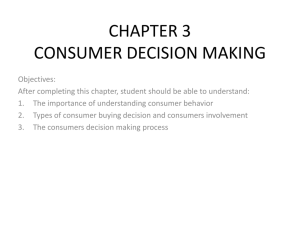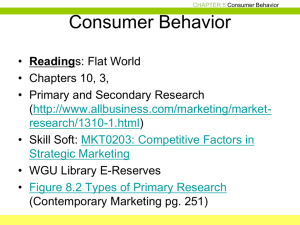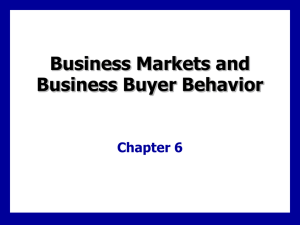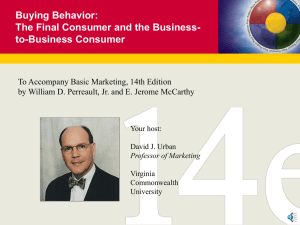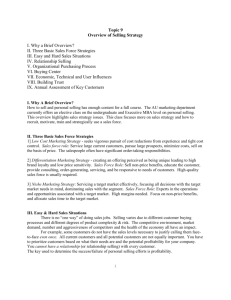ANALYSING THE BUSINESS ENVIRONMENT
advertisement
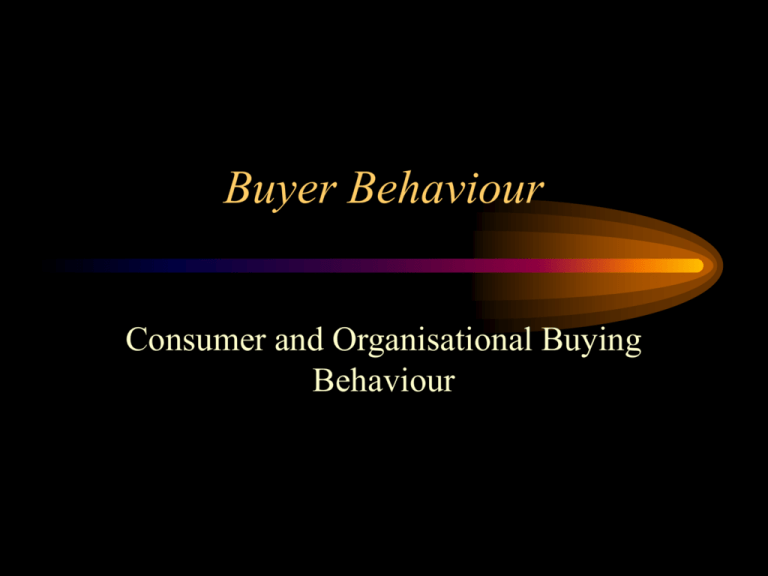
Buyer Behaviour Consumer and Organisational Buying Behaviour Steps in the Consumer Buying Process • • • • • Need recognition Alternative search Alternative evaluation Purchase decision Post-purchase evaluation Alternative Search • 5 sources for information about alternatives – Internal -- own stored information – Group -- family, friends, neighbors – Marketing -- ads, salespeople, dealers, packaging, displays, promotions – Public -- publicity, consumer reports, reviews – Experiential -- trying or viewing the product while shopping Alternative Evaluation • • • • Customer is trying to satisfy a need Customer is seeking benefits Each product is a bundle of attributes Desired attributes vary by purchase situation • Consumers develop a belief about each brand (brand image) that mentally positions the product Purchase Decision • Purchase decision involves several issues – vendor, quantity, timing, payment method • Situation events can influence purchase – stock-out, long lines, store hours, others opinions – ?????????? Post-Purchase Evaluation • Perhaps the most important step for longterm business development • Often overlooked by retailers/service providers • Poor evaluations lead to: – bad word-of-mouth; complaints; returns; etc. Social Influences on Consumer Buying • Social influences – cultural and subcultural • affects everyday behaviour, a basic influence • transmitted by family, church and schools – Social class • affects attitudes and values – Reference groups and family • family, close friends, professional associations • most people have multiple reference groups Marketing Influences Consumer Buying – Product • appearance, packaging, performance – Price • quality, value, prestige, very important! – Promotion • advertising, sales promo, salespeople, publicity • must be consistent and have repeated exposure – Distribution (place) • must be located where the buyer wants it • stock-outs are killers Situation Influences Consumer Buying • Physical surroundings – geographic and institutional location, décor, sounds, aromas, lighting, weather and merchandising • Social – who is present? Others roles in consumption? • Temporal – time of day or season, holiday, time since last purchase, time constraints on consumer Situation Influences Consumer Buying • Task definition – shopping intent, selection, obtain information, and/or buyer role versus user role • Antecedent states – moods, momentary conditions, variety seeking, habitual behaviors. These are immediately antecedent to the purchase decision Organisational Buying • Steps in the Process: – – – – – – – Problem recognition (need recognition) Determination of characteristics and quantity Search for qualified potential sources Acquisition and analysis of proposals Evaluation of proposals and supplier selection Selection of an order routine Feedback and post-purchase evaluation Major Influences in Organisational Buying • People – Users, influencers, deciders, approvers, gatekeepers, buyers • Environmental – – – – Purchasing department evolution Cross-functional roles, Centralized purchasing Internet purchasing, Long-term contracts Lean production (JIT) Key Requirements in Organisational Buying • Value – lowest total cost of ownership • Understanding customer requirements – transaction – relationship – partnership Key Influences on Organisational Buying • Company reputation – quality, price, delivery, previous experience • Salesperson – understands buyer requirements – investigates needs thoroughly • Technological interface • Capability
